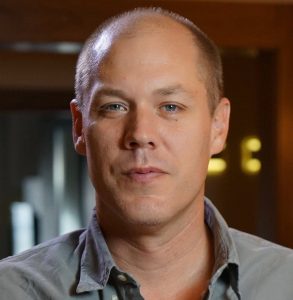The ABC‘s Foreign Correspondent Adam Harvey on responsible reporting from the Middle East.

Adam Harvey. By Tom Hancock.
Australia’s Middle East correspondents operate in one of the most restrictive and misrepresented regions in the world.
Reporters Without Borders (RWB) 2021 report ranked the region lowest on its World Freedom of Press of Index, marking a longstanding trend.
A few years ago, RWB reported the region’s journalists were at risk when they fail to either repeat the state’s propaganda or remain silent.
“As a result of wars, persecution by authoritarian regimes, as well as the number of journalists killed, threatened, silenced, or forced into exile, most of the region’s countries are ranked low,” the report found.
In places like Iran, hundreds of journalists, media workers and political dissidents are among those who languish in prisons for peacefully expressing their human rights.
Lebanon, usually celebrated as one of the Middle East’s freest countries, has in recent years witnessed the government violently crack down on freedom of expression and speech.
In this highly restricted and repressive environment it is crucial for Middle East correspondents to navigate the region’s socio-political landscape with caution in order to keep themselves and their sources safe.
ABC’s Middle East Correspondent Adam Harvey said encrypted apps like Signal, Whatsapp and Telegram had made it a lot easier to connect with sources and to conduct interviews.
Mr Harvey said those he interviewed were aware of how the police state operated and how far they could push the boundaries in terms of their criticism of the government and its policies.
“But if it’s that dangerous for someone to talk to me, I wouldn’t do a broadcast interview with them. I’d just use their information on background, or off the record,” Mr Harvey said.
It is important for journalists reporting on the Middle East to provide a fair and accurate depiction of the region for their audiences back home.
Despite the region’s rich and diverse communities and cultures, Australian news on the Middle East tends to prioritise Islamic terrorism and extremism and the oppression of Muslim women.
Back in 2010, Islam and the Australian News Media author Mohamad Abdalla wrote that “international coverage of the Middle East that could serve to educate Australian audience about the diversity of Muslim culture and identity is relatively thin”.
When taking a look at more recent reports it appears nothing has changed.
A 2017 opinion survey on the News Media Coverage of Islam and Muslims in Australia found that most Muslim participants were critical of Australia’s coverage because of the stereotypical representation of Muslims, the perceived biases, the conflation of terrorism with Muslims and Islam, and the portrayal of Muslims as the enemy within.
According to a recent study, Muslims, as well as Indigenous and Chinese people, were most targeted in racist media coverage in Australia.
The study analyzed over 300 racialized opinions pieces in Australian mainstream media and found 75 percent targeted Muslim people or Islamic communities.
When reporting on the Middle East, Mr Harvey said he enjoys “confounding expectations of a place that a lot of people have written off” and that Australia’s coverage on the region needs to move away from issues on terrorism and extremism towards a focus on the region’s human aspect.
It is this type of reporting that can contribute to breaking down the negative stereotypes about the Middle East, and by doing so, can help to create a more inclusive society for individuals, families and communities of the Islamic faith in Australia.
Featured Image: Photograph taken by Renee Davidson

